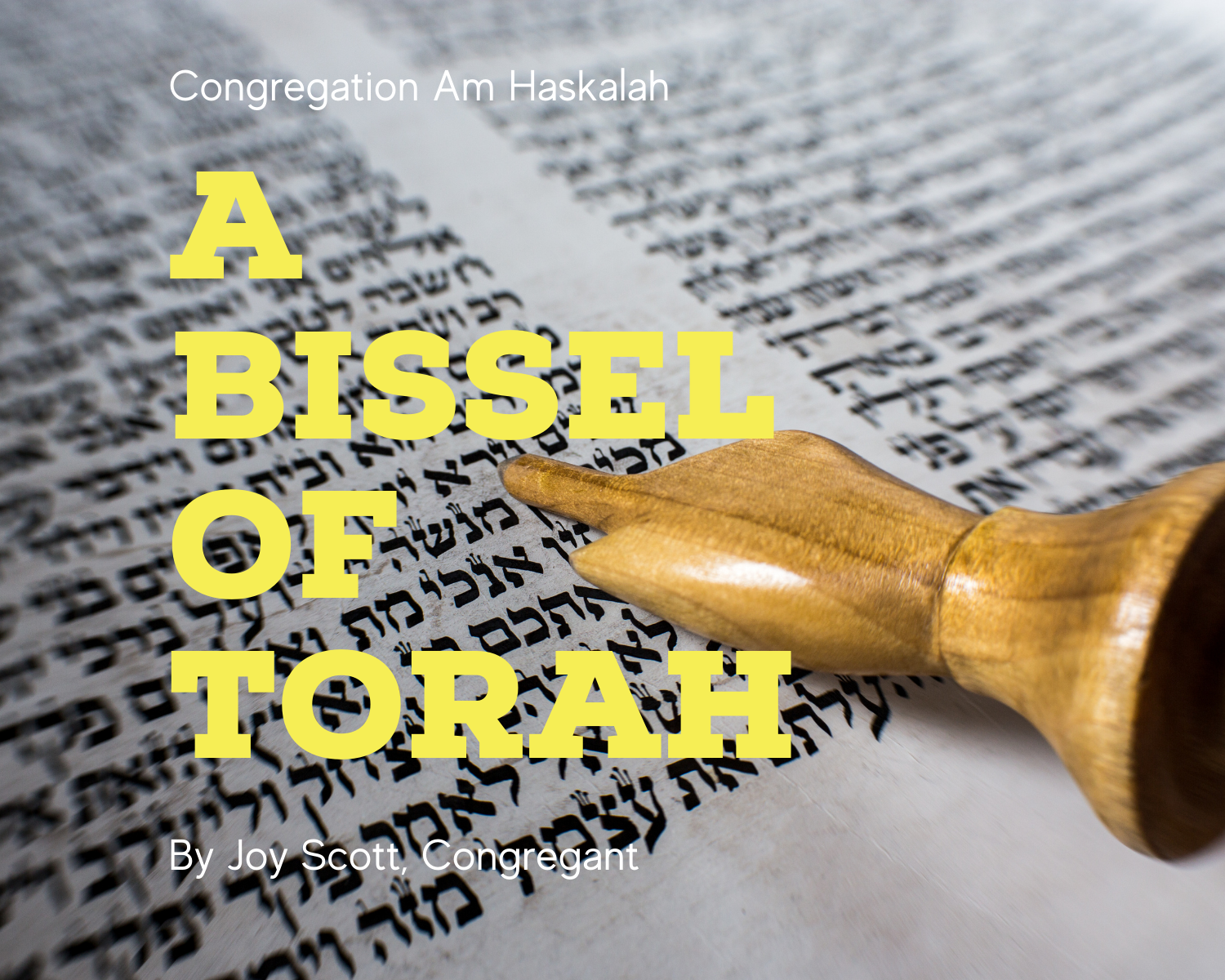By Joy Scott, Am Haskalah Congregant
In last week’s Torah parsha, Mishpatim, Moses provided clarification of the Ten Commandments given to the Israelites by God at Mount Sinai. Additionally, the Children of Israel learned the nature of numerous other laws, commandments, prohibitions and the consequences for disobedience.
This week’s Torah parsha, Terumah, begins with God’s statement to Moses: “Speak to the Children of Israel, and have them take for Me an offering, from every person whose heart inspires him to generosity, you shall take My offering” (1). Within a few lines of the parsha, the necessity for the ‘gifts’ to be offered is stated: “And they shall make me a Sanctuary, and I will dwell in their midst” (2).
This statement evoked vociferous controversy from two of our most revered sages. Rashi claimed that the continuity was artificial, and not consistent with the proper sequence of events. His contention was that the Mishkan (Tabernacle) should have been written six chapters later, after the incident of the ‘Golden Calf’.
Maimonides’ opinion differed sharply from that of Rashi. He believed that the purpose of building the Mishkan was to continue the Revelation which had begun at Mount Sinai. He cited ‘The Song of the Sea’, when the Israelites reached dry ground after fleeing from Egypt, as evidence: “The place You will make to dwell within our midst; the Sanctuary which You defined” (3). In effect, Maimonides perceived that the building of the Sanctuary was always part of the grand plan (4). More modern rabbinical scholars reconciled the dispute by claiming that Rashi was interpreting this part of the Torah from a ‘chronological’ perspective, whereas Maimonides considered it from a ‘thematic’ point of view.
At the time of the ‘Revelation’, the heavens opened for the greatest light show on earth, leaving a nation mesmerized and awe-inspired. However, the Israelites themselves were passive recipients of this unique, ‘never-to-be-repeated’, gift from above. Prior to the building of the Mishkan, the Israelites had seen God imposing plagues on the Egyptians, the miracle of the dividing of the Red sea, the gift of ‘manna’ from heaven and water drawn from a rock.
Despite an unprecedented sequence of miracles and an enumeration of directives and rules, the Israelites remained in a state of dependence on God. The primary objective of building the Sanctuary was to transition the People from passive recipients of God’s blessings to “partners in the work of creation”(5). Precise details were provided by God, pertaining to the actual design and placement of each article and each piece of furniture.
The Israelites worked together, as architects, artisans, designers and carpenters. The women created the tapestries and the elegant woven curtain which covered the ark, containing the ‘testimony’ engraved upon with the Ten Commandments.
This is one of the basic tenets of Judaism: God gives each of us the gift of unique talents, skills, and creativity. It is our obligation to utilize these gifts, as a partner with God, to create a society which reflects His values.
FOOTNOTES:
(1) EXODUS (25:1-2)
(2) EXODUS (25:10)
(3) EXODUS (15:3)
(4) Maimonides: “Guide for the Perplexed”
(5) Shabbat (10a)
